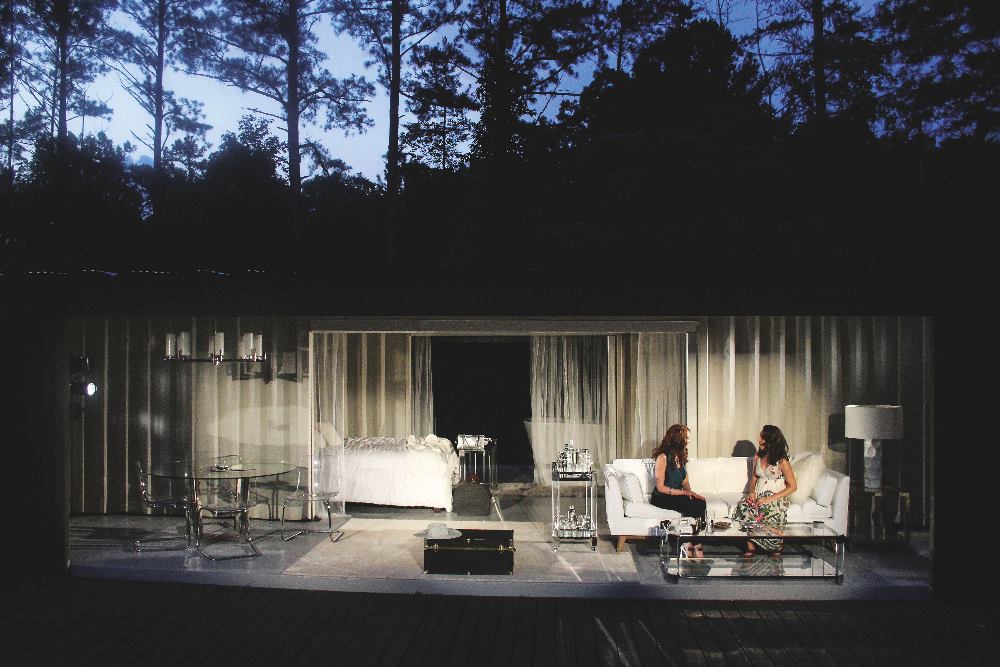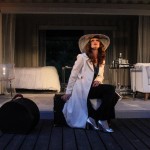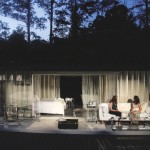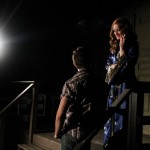Each month, American Theatre goes behind the scenes of the design process of one particular production, getting into the heads of the creative team.
Serenbe Playhouse’s production of Tennessee Williams’s A Streetcar Named Desire didn’t take place in an actual streetcar, but its set did evoke travel: The play was mounted inside recycled shipping containers, placed among the woods of Serenbe, Ga. The design also moved the play forward by decades, featuring contemporary pantsuits, button-down shirts, and stark white furniture.

Brian Clowdus, DIRECTION AND SCENIC DESIGN: I’ve read Streetcar Named Desire plenty of times, but I’ve actually never seen the movie or a staged production of it. I think Tennessee Williams is now like Shakespeare—it has a timeless quality; Streetcar could take place in 2015 and it could take place in the ’40s. For me, what was most important was to create a timeless environment that would allow the story and characters to be in the main focus.
The entire set was white and clear, the idea being that it was a blank canvas for the story to come to life. It was situated in recycled shipping containers. The shipping containers are part of an initiative at Serenbe called the Art Farm. About a year ago, they started pulling these recycled shipping containers into an area; the idea was to create a multipurpose venue which can serve as classrooms and small concerts. We were able to inaugurate the space. And as they were constructing it, in my head I was thinking, What would make sense in a really tight, cramped space? I’d been dying to do Williams, and it just clicked—Streetcar, it’s perfect! There were two rooms in the play, and there were two shipping containers. And there were also two containers on an elevated platform that could become Eunice’s apartment. It really feels like it was built for the play. So much of the language in Streetcar is, “Oh my gosh, how are you living in something that small?” The containers really created the cramped environment for the characters.
Literally every single Serenbe Playhouse production is in a different site-specific location in the Serenbe community. Serenbe is 1,000 acres, so we’ve got 1,000 possibilities.
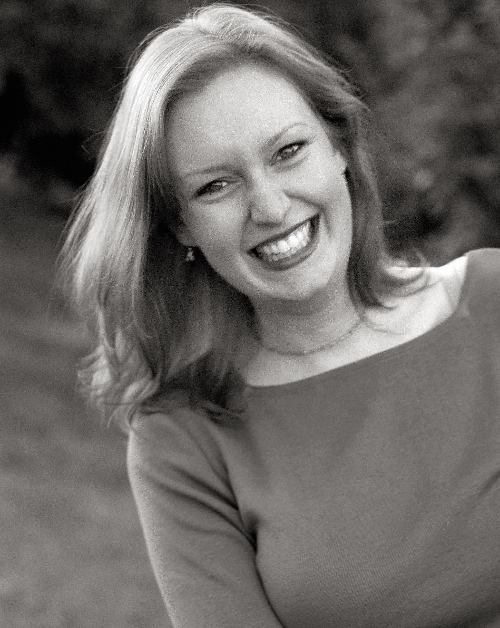
Abby Parker, COSTUME DESIGN: Brian wanted a timeless look with the set and the costumes, so that the audience would be able to associate better with the story. I tried to find pieces that were elegant to the point that they could span several different decades. I wanted to have the feel of New Orleans, with the heat and the humidity (performing outside helps a lot with that). The guys were a lot of the times in undershirts, or unbuttoned button-downs. And the women were in a lot of sleeveless dresses and sleeveless shirts.
My inspiration for Blanche was the actress herself. Deb Bowman is Blanche personified; she is a very classy woman. I picked things that would look classy on her without being over the top. We had a mostly white set. Deb is a redhead, and so jewel tones looked absolutely beautiful on her. I tried to use as much of that as possible to bring her out of the set. I grew up in the South, and my whole family is from a little tiny town in Georgia. My mom and my family always imprinted on me that the modern-day Southern belle is “The Golden Girls”—the classy, slim-lined pantsuit. So if a beautiful, pampered woman was traveling through the South, what would she wear? I put Blanche in pants and a long white jacket, because I wanted her to look like she was dressed to travel, but still very well put together.
The way I ended up justifying it in my mind is that Blanche’s brain is still stuck in the old-school society of the South. But physically and visually, it’s a different time. Blanche has been born in the wrong time period and in the wrong place for the person that she really is. That’s why she can’t handle it.
A Streetcar Named Desire ran at Serenbe Playhouse June 11–28, under the direction (and scenic design) of Brian Clowdus. The production also featured assistant direction and scenic design by Ryan Oliveti, music by John Burke, costume design by Abby Parker, wig design by Rob Navarre, lighting design by Kevin Frazier, and sound design by Daniel Pope.

